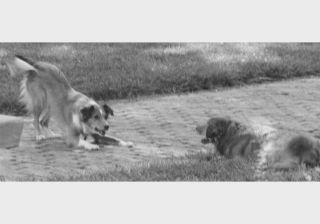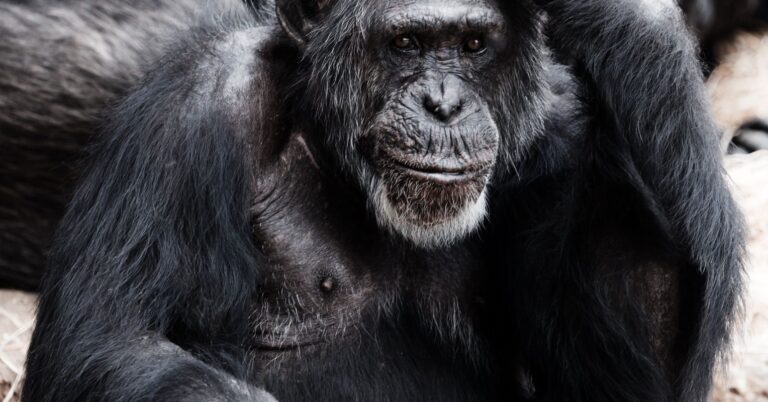Your dog just did a prey bow. He’s dangerous and shouldn’t be allowed to go to dog parks! –A story told to me by Joe about his dog Casey, a playful mutt who had never been engaged in a fight
After Dogs Demystified was published, I received numerous emails supporting what I wrote but also asking good questions about, and expanding on, some of the topics I included and a few I missed including “prey bows” and “littermate syndrome.”
Play Bows and Prey Bows
It’s well known that dogs perform highly stereotyped actions called bows that are used in various ways to ask another dog to play—”I want to play with you”—thus, called “play bows”—or to punctuate play bouts to maintain a “play atmosphere”—a dog is basically saying “I still want to play with you” when things get rough or when one or both are unsure if play is still “the name of the game.” Play bows help dogs play fair and establish the “golden rules of fairness.” They also allow dogs to jump up and move in different directions with different amounts of vigor because when the dogs are crouched down on their forelegs they can easily spring here and there. When they bow, dogs also are stretching their entire bodies, which allows flexibility and acrobatics.
I received a lot of emails supporting these views of play bows—why they’ve evolved and how they’re used—and also a few about “prey bows.” I’d never heard about what some people call “prey bows,” and an email from Marta captured the tone of the other queries: “I noticed you didn’t write about ‘prey bows’ and I wonder why. You might not know there is some controversy about whether ‘prey bows’ actually exist.” I immediately did an online search and found a hodgepodge of information, none of which led me to consider prey bows to be an important category of bows.1
In one comparison between play bows and prey bows we read2:
In the play bow, the dog’s front legs are stretched out and lowered in such a way that the elbows are close to the ground and the rear is up in the air. The ears are also up, the mouth is partially opened (play face) and the lips are relaxed. The tail is lowered or down. In a prey bow, you’ll notice the dog’s body leaning backwards so to immediately spring forward, the tail is held up and the dog is fixated on the object of interest. The mouth is typically closed. The front of the body is lowered with the elbows near the ground, while the rump is in the air. You can notice the tension building up. [my emphasis]
On the “All Dogs Toronto” site, we’re told:
Here we see a few subtle differences in body language when compared to the classic prey bow. Like the classic, we have the ears and rear up, and the elbows very near or touching the ground entirely. The differences here lie in the tail, which is straight up, and the mouth, which is gently closed. This indicates an intention to pounce, and it means business!
Both of these descriptions and others also describe play bows, so I asked a few experts they didn’t agree with the supposed differences between play bows and prey bows. I also looked at some videos and went to a local dog park and randomly looked at 100 bows. There were no differences when the dogs launched toward another dog to play by slamming into them, biting or nipping them, or jumping on them. The dogs’ tails were high and wagging in different ways in 87 of the play bows, a trend that others and I have previously noticed. An intention to pounce says little to nothing about a dog’s motivation.

A play bow with high tail.
Source: Marc Bekoff
Given what we know, there’s no reason to distinguish play bows from prey bows. People who advocate for the existence of prey bows need to do detailed research as have others who have studied play bows.
Dog behaviors don’t occur in a vacuum, and certain actions or behaviors such as baring teeth, pouncing, and growling can mean different things in different contexts. These behaviors are not necessarily aggressive or predatory. The same can be said for mounting and humping because they’re not necessarily sexual overtures.
Littermate Syndrome
Another entry I was missed is called “littermate syndrome.” I’d never heard of it and received some emails about it including this one: “I’m working on a piece for our online publication about ‘littermate syndrome’ …Is this actually a thing? My research so far indicates that it’s a myth.”3
In an essay called “Littermate Syndrome in Dogs”4 we read:
Littermate syndrome is said to be evident when pet owners observe signs such as: Extreme separation anxiety; Fear of other dogs, aggression toward other dogs; Fear of unfamiliar people, aggression toward people; High anxiety when siblings puppies are apart from one another; Leash reactivity.
Because I had never heard of this syndrome, I asked a bunch of dog experts and only a few had heard about it, but none believed it was a real syndrome.5 I agree with other dog researchers and citizen scientists that for now it’s a myth that needs to be put to rest once and for all.
Distinguishing Facts From Fiction by Taking the Dog’s Point of View
We shouldn’t assume there are quick, cut-and-dried answers to all of our questions about what makes dogs tick. It’s important to distinguish fact from fiction. Unfortunately, many myths about dog behavior remain floating around in books, articles, and on the web, and they can be harmful to the dogs and dog-human relationships.6 Right now, there are no striking differences between play bows and prey bows that warrant separating them into different categories, and littermate syndrome, while it might occur from time to time, is rare enough not to warrant being called a syndrome.
There are practical issues associated with mislabeling dog behavior: For example, Joe shouldn’t have been admonished for bringing Casey to dog parks.
There’s no substitute for careful, detailed observation, and it’s essential to look at entire sequences of interactions rather than focus only on a few seconds here and there. Very often, the whole encounter is more than the sum of its parts, and to figure out what is actually occurring from the dogs’ point of view, we need to combine small- and big-picture views of ongoing social encounters.




















+ There are no comments
Add yours